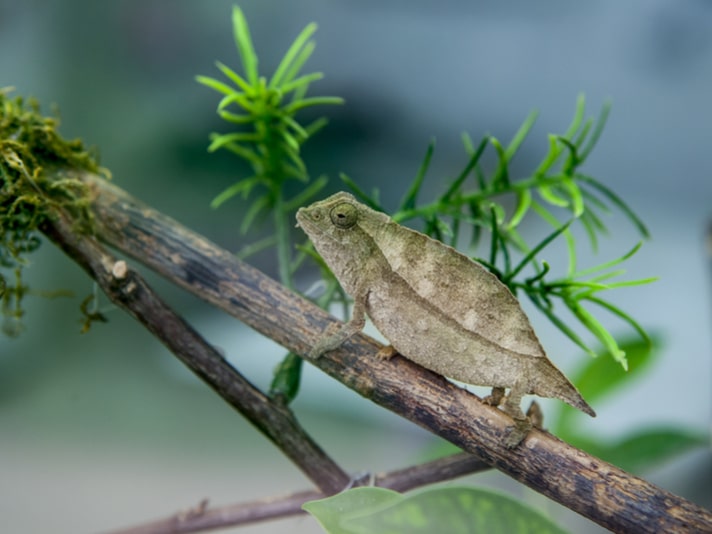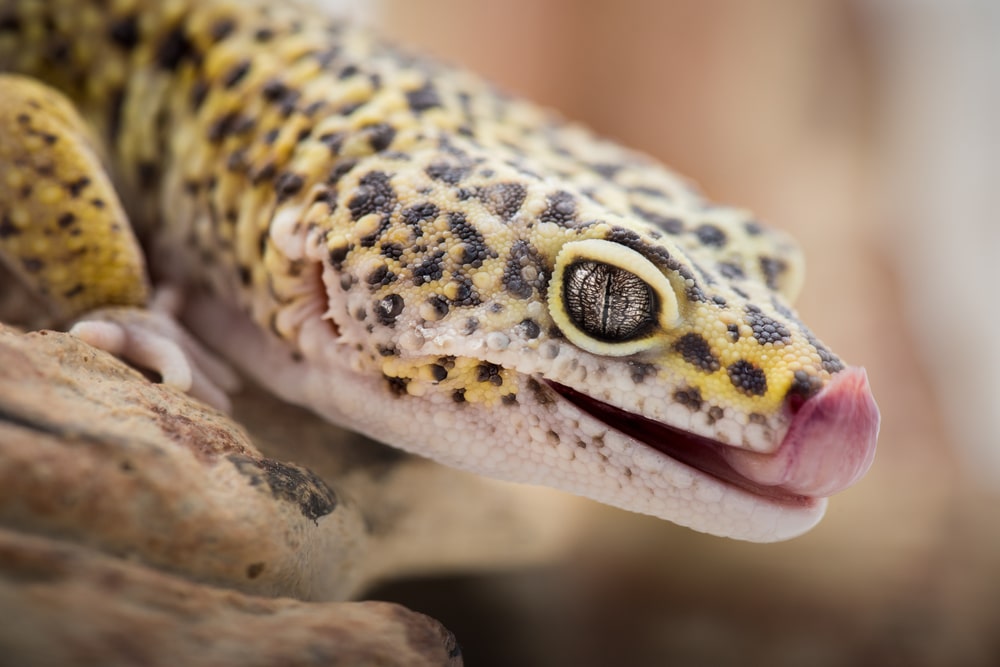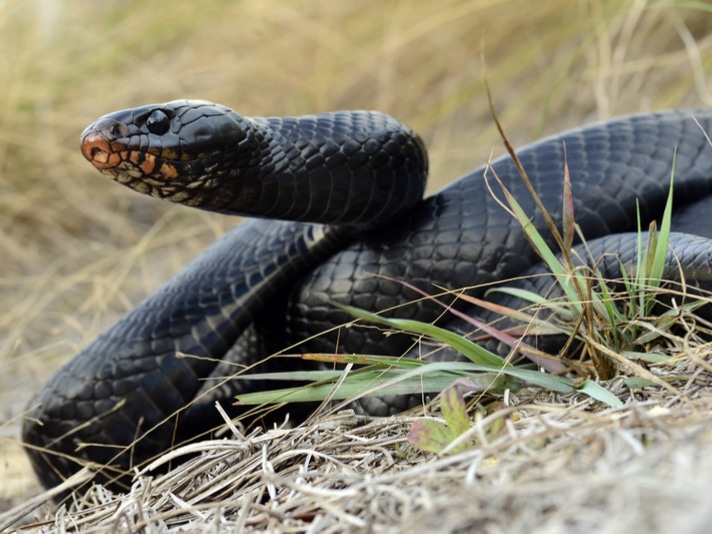What do the new listings mean to herp owners?
Did you know that your pet herp may be a species of protected wildlife? Many exotic reptiles and amphibians are protected under CITES, also known as the Convention on International Trade in Endangered Species of Wild Fauna and Flora, which is an international agreement initiated in 1973 and is currently signed by 182 countries and the European Union (also known as Parties) regulating international trade in more than 35,000 wild animal and plant species, including their parts, products, and derivatives.
The aim of CITES is to ensure that international trade in specimens of wild animals and plants does not threaten their survival. In the United States, the implementation of CITES is the responsibility of the Secretary of the Interior, who has tasked the U.S. Fish and Wildlife Service (USFWS) as the lead agency responsible for the Convention’s implementation. You can help USFWS conserve these species by complying with CITES and other wildlife laws to ensure that your lawful activities as a pet owner or seller are separate and distinct from the activities that harm wild populations.
How Does CITES Work?
Species protected by CITES are included in one of three lists, referred to as appendices, according to the degree of protection they need: Appendix I includes species threatened with extinction and provides the greatest level of protection, including restrictions on commercial trade. Appendix II includes species that, although currently not threatened with extinction, may become so without trade controls. Appendix III includes species protected by at least one country that needs assistance from other Parties to control its international trade. Changes to Appendices I and II must be proposed at a CoP and agreed to by a two-thirds majority of the Parties present and voting. In contrast, listings to Appendix III can be done by individual Parties at any time.
Newly Protected Reptiles and Amphibians
Every few years, the member countries to CITES hold a meeting of the Conference of the Parties, or CoP, to review, discuss, and negotiate changes in the management and control of trade in the various wildlife species covered by the agreement.
At the recent 17th Conference of the Parties (CoP17), held in Johannesburg, South Africa, last September-October, CITES Parties voted to increase protections for many herp species including African Pygmy Chameleons, African/Middle Eastern softshell turtles, lizards, snakes and frogs as indicated in the following lists. Herps represented a third of all species considered at the CoP (including 4 crocodile species that are not covered here). These new CITES listings went into effect on January 2, 2017.
The lists below include species adopted at CITES CoP17. For a complete list of species protected under CITES, please check the CITES Species Database at https://www.speciesplus.net/
Species added to Appendix I (9):
Reptiles (8)
Abronia anzuetoi (Anzuetoi Arboreal Alligator Lizard)
Abronia campbelli (Campbell’s Alligator Lizard)
Abronia fimbriata
Abronia frosti (Frost’s Arboreal Alligator Lizard)
Abronia meledona
Cnemaspis psychedelica (Psychedelic rock gecko)
Lygodactylus williamsi (Turquoise dwarf gecko)
Shinisaurus crocodilurus (Chinese crocodile lizard)
Amphibians (1)
Telmatobius culeus (Titicaca water frog)
Species added to Appendix II (62):
Reptiles (55)
Abronia aurita (Cope’s Arboreal Alligator Lizard)
Abronia bogerti (Bogert’s Arboreal Alligator Lizard)
Abronia chiszari (Chiszar’s Arboreal Alligator Lizard)
Abronia cuetzpali (Alligator Lizard)
Abronia deppii (Deppe’s Arboreal Alligator Lizard)
Abronia fuscolabialis (Mount Zempoaltepec Alligator Lizard)
Abronia gaiophantasma (Brilliant Arboreal Alligator Lizard)
Abronia graminea (Sierra de Tehuacan Arboreal Alligator Lizard)
Abronia leurolepis (Flat-scaled Arboreal Alligator Lizard)
Abronia lythrochila (Red-lipped Arboreal Alligator Lizard)
Abronia martindelcampoi (Martin del Campo`s Arboreal Alligator Lizard)
Abronia matudai (Matuda’s Arboreal Alligator Lizard)
Abronia mitchelli (Mitchell’s Arboreal Alligator Lizard)
Abronia mixteca (Mixtecan Arboreal Alligator Lizard)
Abronia montecristoi (MonteCristo Arboreal Alligator Lizard)
Abronia oaxacae (Oaxacan Arboreal Alligator Lizard)
Abronia ochoterenai (Ochoterena`s Arboreal Alligator Lizard)
Abronia ornelasi (Ornela’s Alligator Lizard)
Abronia ramirezi (Ramirez’s Alligator Lizard)
Abronia reidi (Reid’s Arboreal Alligator Lizard)
Abronia salvadorensis (Salvador Arboreal Alligator Lizard)
Abronia smithi (Smith’s Arboreal Alligator Lizard)
Abronia taeniata (Banded Arboreal Alligator Lizard)
Abronia vasconcelosii (Bocourt's Arboreal Alligator Lizard)
Rhampholeon (Rhinodigitum) acuminatus (Nguru Spiny Pygmy Chameleon)
Rhampholeon (Rhinodigitum) beraduccii (Beraducci’s Pygmy Chameleon)
Rhampholeon (Rhinodigitum) boulengeri (Boulenger’s Pygmy Chameleon)
Rhampholeon (Rhinodigitum) bruessoworum (Mount Inago Pygmy Chameleon)
Rhampholeon (Rhinodigitum) chapmanorum (Chapman’s Pygmy Chameleon)
Rhampholeon (Bicuspis) gorongosae (Mount Gorongosa Pygmy Chameleon)
Rhampholeon hattinghi (Mount Nzawa Pygmy Chameleon)
Rhampholeon (Bicuspis) marshalli (Marshall’s Stump-tail Chameleon)
Rhampholeon (Rhinodigitum) moyeri (Udzungwa Pygmy Chameleon)
Rhampholeon (Rhinodigitum) platyceps (Malawi Stumptail Chameleon)
Rhampholeon (Rhinodigitum) nchisiensis (Blue-eyed Pygmy Chameleon)
Rhampholeon (Rhinodigitum) nebulauctor (Mount Chiperone Pygmy Chameleon)
Rhampholeon (Rhinodigitum) maspictus (Mount Mabu Pygmy Chameleon)
Rhampholeon spectrum (Cameroon Stumptail Chameleon)
Rhampholeon temporalis (East Usambara Pygmy Chameleon)
Rhampholeon (Rhinodigitum) tilburyi (Mount Namuli Pygmy Chameleon)
Rhampholeon (Rhinodigitum) uluguruensis (Uluguru Pygmy Chameleon)
Rhampholeon viridis (Rare (Green) Pygmy Chameleon)
Rieppeleon brachyurus (Zomba Pygmy Chameleon)
Rieppeleon brevicaudatus (Short-Tailed Pygmy Chameleon)
Rieppeleon kerstenii (Kenya Pygmy Chameleon)
Paroedura masobe (Masobe gecko)
Lanthanotidae spp.
(Earless monitor lizards)Atheris desaixi (Ashe's bush viper)
Bitis worthingtoni (Kenya horned viper)
Cyclanorbis elegans (Nubian flapshell turtle)
Cyclanorbis senegalensis (Senegal flapshell turtle)
Cycloderma aubryi (Aubrys flapshell turtle)
Cycloderma frenatum (Zambezi flapshell turtle)
Trionyx triunguis (Nile soft-shell turtle)
Rafetus euphraticus (Euphrates soft-shell turtle)
Amphibians (7)
Dyscophus antongilii (Tomato frog)
Dyscophus guineti (False tomato frog)
Dyscophus. insularis (Antsouhy tomato frog)
Scaphiophryne marmorata (Green burrowing frog)
Scaphiophryne boribory (Burrowing frog)
Scaphiophryne spinosa (Burrowing frog)
Paramesotriton hongkongensis (Hong Kong warty newt)
U.S. Native Turtles
The United States recently listed the common snapping turtle (Chelydra serpentina), Florida softshell turtle (Apolone ferox), smooth softshell turtle (Apalone mutica), and spiny softshell turtle (Apalone spinifera), in Appendix III. This listing, which went into effect on November 21, 2016, helps the USFWS to gain international cooperation in controlling trade in certain native wildlife and plant species that are protected by State or Federal law in the U.S.; allows international trade in species listed in Appendix III with CITES documents; and provides a means of gathering trade data and other relevant information to assist the USFWS to ensure that international trade is conducted lawfully.
Appendix II vs III
A species is unilaterally listed in Appendix III by a country in the native range of that species, at the request of that country. In contrast, a species is listed in Appendix II by a vote of the Parties. For the export of specimens of an Appendix-III species, the Management Authority in the country of export need only determine that the specimens were not obtained in contravention of that country’s laws for the protection of animals and plants. In contrast, the export of specimens of an Appendix-II species requires that the CITES authorities in the country of export determine that the specimens were acquired legally and that their export will not be detrimental to the survival of the species.
Protection for all the World’s Softshell Turtles
Trade in turtles is most common in East Asia, principally in China, with supplier countries feeding well-established legal and illegal trade networks. Turtles are used primarily as food and in traditional medicines, although a growing pet trade across the region and in other parts of the world is increasingly impacting a number of threatened species. Freshwater turtles and tortoises are collected, traded and utilized in overwhelming numbers. The U.S. is also a major trading country for turtles and tortoises. The USFWS supports a strategic, global approach to freshwater turtle conservation, as evidence shows that when protections for freshwater turtles are strengthened in one region, demand in other regions for other species may increase.
With the Appendix II listing of the African and Middle Eastern softshell turtles at CoP17; the Appendix III listing of North American softshell turtles by the United States; and the Appendix II listing of the Asian softshell turtles at CoP16 (see Reptiles Oct 2013: New CITES Herp Listings) all of the world’s softshell turtles now have CITES protection, ensuring that trade in these species is both legal and sustainable.
What Do the New Listings Mean to Herp Owners?
Unless they are moving animals across an international border, these listings will have little effect on the average hobbyist or pet owner. If you do own any of the newly listed species and plan to travel internationally with your pets, please refer to the USFWS website "Personal Pets” section found here:
https://www.fws.gov/international/Permits/by-activity/personal-pets.html.
As a pet owner and consumer you should make sure that you always purchase herps from a reputable seller/breeder/dealer. Ask questions. Where did the animals come from? Were the animals legally acquired? If the juveniles are obviously captive bred, were the parents legally acquired? Be an educated consumer and help protect the animals in the trade. Keep a record of your purchase with receipts in a permanent file so that you’ll be prepared to apply for permits in the future, if needed.
What About Importers and Exporters?
Animal importers and exporters need to obtain proper legal documentation before importing and/or exporting CITES-listed species. The backbone of CITES is the permit system that facilitates international cooperation in conservation and trade monitoring. Permits are issued only if a country’s CITES Authorities determine that trade is legal and does not threaten the species’ survival in the wild. The use of standardized permit forms allows inspection officials at ports of export and import to quickly verify that CITES specimens are properly documented. Appendices I, II, and III species require applicants to submit standard application forms and fees to USFWS in order to obtain CITES export/import permits to move specimens across international borders. Permit systems also facilitate the collection of species-specific trade data, which are used in the creation of annual reports. These data are used to determine trends in trade and ensure that trade in wildlife is sustainable. This trade monitoring has created a substantial body of information on the management and use of CITES species worldwide. Importers and exporters, please make sure you apply for the proper permits before shipping your animals. Thank you for your assistance in helping to conserve these species for future generations and traders.
For More Information
To learn more about the herp proposals that the United States submitted for consideration to CoP17, please refer to the species spotlight for softshell turtles, available from https://www.fws.gov/international/cites/cop17/african-and-middle-eastern-softshell-turtles.html, and the the species spotlight on African pygmy chameleons, available from https://www.fws.gov/international/cites/cop17/african-pygmy-chameleons.html.
For a complete overview of USFWS submissions to CoP17, visit https://www.fws.gov/international/cites/cop17/us-submissions.html.
For details about permit application forms, visit www.fws.gov/international/permits/do-i-need-a-permit.html.
For details about permit procedures for freshwater turtles, visit https://www.fws.gov/international/permits/by-species/freshwater-turtles.html.
For more information about CITES and what species are found on the Appendices, please refer to www.cites.org/.
If you have questions or seek further information, email managementauthority@fws.gov with questions about permits, or email scientificauthority@fws.gov with questions about the species.
Dr. Leuteritz is a herpetologist for the U.S. Fish and Wildlife Service. He works on reptile and amphibian trade issues pertaining to CITES in the Division of Scientific Authority. He also has extensive experience in Africa, conducting field research on tortoises.




